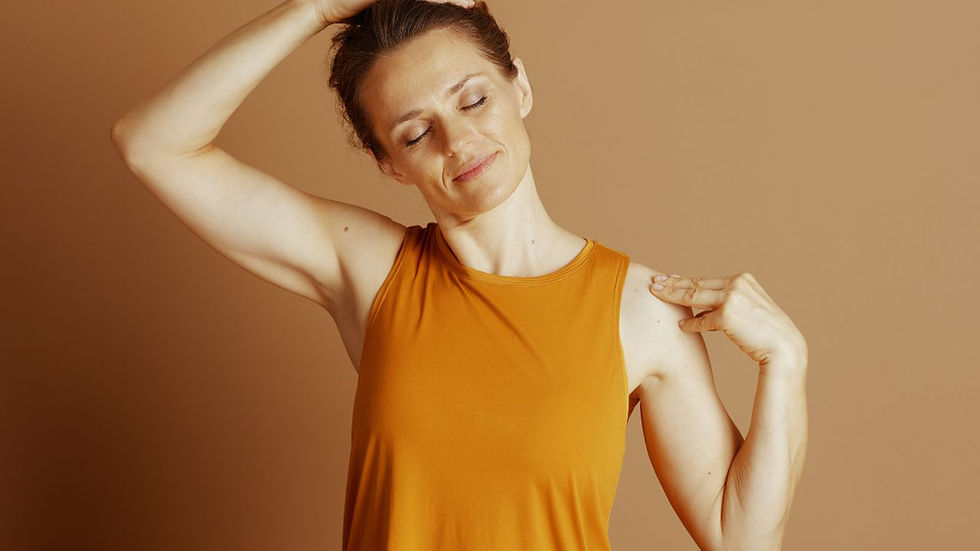10 Facts about the shoulder
- Ken Belveal
- Dec 7, 2022
- 2 min read

A great design - The human shoulder is made up of three bones: the clavicle (collarbone), the scapula (shoulder blade), and the humerus (upper arm bone), as well as accompanying muscles, ligaments, and tendons.
No socket - Unlike many of the other joints in the body that support movement (i.e., the hip, which has a deep socket), the shoulder has no socket. The ball of the arm bone moves against a flat surface on the shoulder blade.
A small connection - The entire shoulder joint has one bony connection to the rest of the skeleton. It is where the collar bone connects to the sternum and is called the sternoclavicular joint. This design allows a lot of movement in the arm and shoulder.
Muscle dependent - The shoulder is more dependent on muscles than any other joint in the body essentially trading stability for mobility. As a result, the eight muscles that control the stability and movement of the shoulder and arm are more important than in other joints.
Common problem - Almost 8 million people visit a doctor's office every year for shoulder-related problems. More than half of these visits are for problems with the rotator cuff. The rotator cuff muscles are four muscles that keep the arm in the center of the shoulder no matter what motion is being performed. Pulling an object too fast, rotate an object at awkward angles, or overuse their rotator cuff, can injure them.
Most flexible - The shoulder is the most mobile joint in the body. It moves up and down and rotates in and out in all planes. Because it is so mobile it is also less stable and is susceptible to injury. Also, rehabilitating a shoulder injury can be challenging because the attendant motion must be restored to have a properly functioning shoulder without pain.
A pain in the shoulder - According to some estimates, as many as 67% of Americans experience shoulder discomfort in their shoulder over the course of their lives. The causes include tendonitis, frozen shoulder, rotator cuff tears, bursitis, osteoarthritis, and dislocation.
A better option - Many people erroneously believe that they need surgery to fix their shoulder pain/injury. As a rule, they don't. Instead, they should pursue a conservative plan of action including rest, ice, anti-inflammatory drugs, and a gradual return to activity, as well as a well-designed program of stretching and strengthening exercises.
The reality of aging - as people age their likelihood of developing osteoarthritis of the shoulder significantly increases. Osteoarthritis affects the smooth cartilage on the end of a bone. It is not considered a normal part of the aging process and is the result of mechanical wear and tear on the joint. This can be controlled with exercise and stretching to properly align the joint.
Affects work - Approximately 25 of 1,000 visits to family physicians are related to shoulder pain and is responsible for 13% of the sick leaves taken annually in America.
Stand Up Str8 has designed and patented a device to strengthen some of the muscles responsible for shoulder girdle stability and strength while improving rounded shoulders and reducing the attending pain. Check it out here.
Enjoy!
This article was abridged from an article by Dr. James A. Peterson published in ACSM Health and Fitness Journal.








Comments